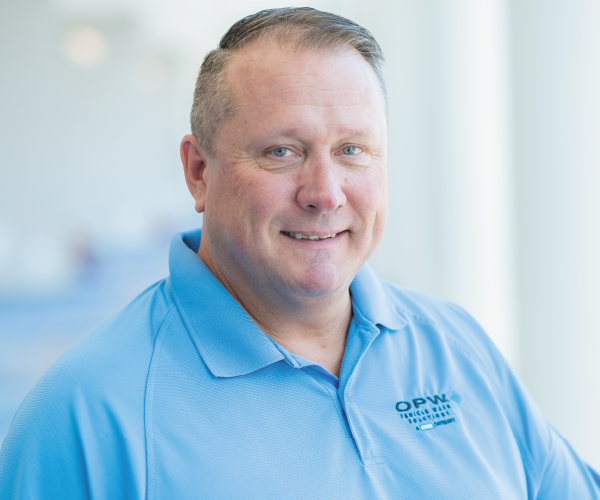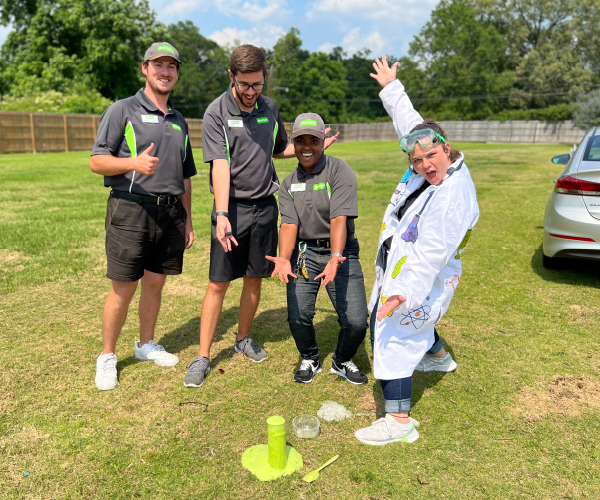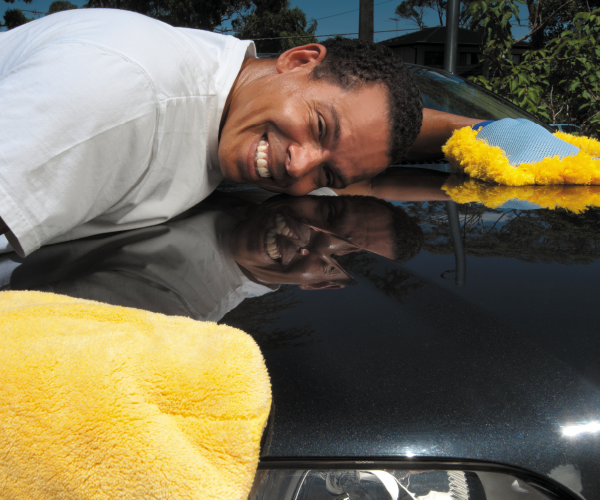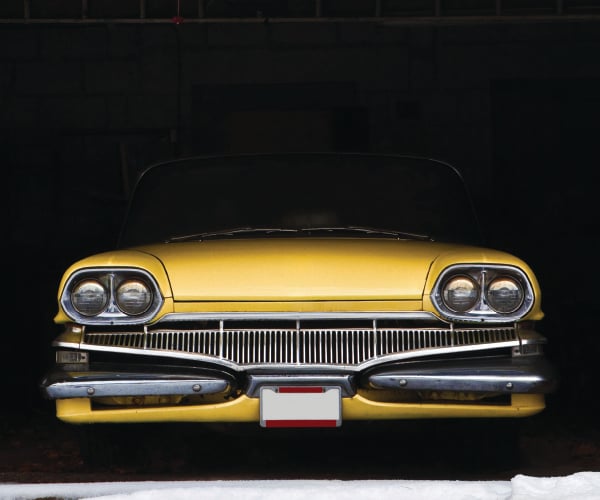
How Do You Wash That?
November 7, 2022
9 minute ReadBy Tom Gresham
Duallies and lowrider
Automatic car washes that use a traditional roller track system often make clear that they cannot accommodate certain vehicles due a range of issues, including their height and width. Low-riding vehicles that have less than 5 inches of ground clearance, including an assortment of high-end sports cars and trucks with dual rear tires – frequently called duallies – are among the vehicles that often run into issues.
However, car washes that are adopting a belted conveyor system can handle lower-profiled vehicles and duallies. As Car Wash Pro Designers notes on its website, “A belt conveyor is fine for Ferraris and Lamborghinis, as well as domestic sports cars like Vipers and Corvettes.”
During an appearance on ICA’s “CAR WASH: The Podcast,” Jessica Zazworsky of the Bubble Barn Car Wash in Burnsville, Minn., talked about her wash’s use of belted conveyors and the attention it has brought them.
“We can wash dually trucks, and we are the only express wash in the area right now that can do that,” Zazworsky said. “And once the first [dually driver] found out, they told all of their dually friends to come on by the Bubble Barn, which has been great for us. And in the summertime, we get lots of cool sports cars in here, because we can wash the really low-riding vehicles as well.”
Zazworsky said that even she was surprised to learn that the Bubble Barn can wash tow trucks – the car wash turns off its top brushes and the truck operator lowers the vehicle’s boom to accommodate it.
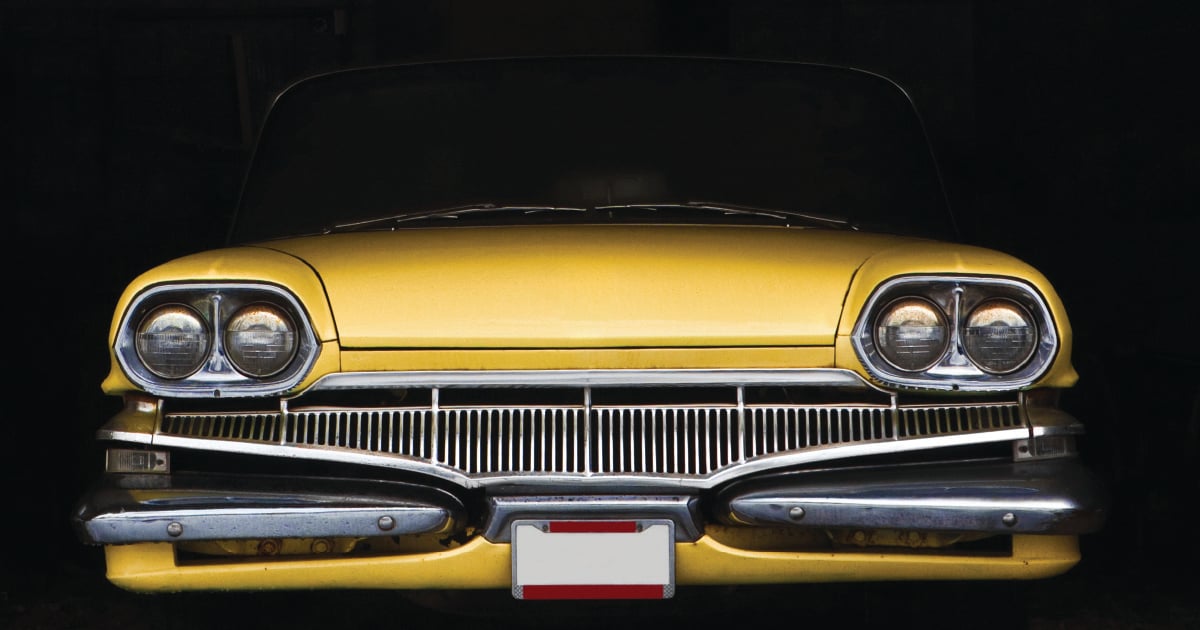
Service vans
Kyle Styer with ISTOBAL Vehicle Wash & Care said high-top service vans represent a growing opportunity for car washes. He said it is not yet common for car washes to integrate an extended height in-bay automatic wash for these types of vans, but it is catching on as the technology on the [point-of-sale] and ancillary services have caught up.
Styer said the increase in popularity of these taller vans in the logistics field has increased the demand for the capability to wash them in the mainstream car wash industry.
“The popularity of the types of high-top vehicles as the mainstay for service vans on the road today makes the need greater for car wash operators to expand their operations,” Styer said. “Either as an add-on operation or standalone, a 24/7, unattended, LPR (license plate recognition) interface capable, with touchless or friction capability and a 9-foot, 6-inch clearance fills this huge gap in the fleet and retail market.”
In general, the wash process for extended-height vehicles is similar to a standard car wash process, though the automated equipment has been extended to be able to handle the extra height and more water and airflow is needed, Styer said.
Sites with extended height equipment for high-top vehicles need staff trained to explain capabilities clearly to clients.
“This clientele is used to very long labor-intensive waits and have been begging for the adoption of more automated services,” Styer said.
Freight trucks
Les Gale, North American sales manager for InterClean Equipment, said most large freight trucks are washed at corporate facilities that either own or lease their own wash equipment, which could be automated or manual. Some trucking companies use mobile truck wash companies that visit corporate facilities and wash the fleet outside in the parking lot. Meanwhile, owner-operated trucks tend to get washed at a retail truck wash or the operator will use a pressure wash on it, Gale said.
For fleets, ISTOBAL’s Styer said, “It is important for them to have a clean vehicle on the road to maintain their brand image – especially when they are promoting their name on the side of each vehicle.”
Gale said car washes and large truck washes typically do not share a site.
“In my experience a good car wash site is not a good truck wash site – different types of clientele,” Gale said. “A good truck wash location is not a good car wash location either. Most car wash customers do not want to be going into a car wash that has lots of trucks around.”
Gale said washes for large trucks and washes for standard vehicles vary in a few ways.
“The biggest difference is the size of the equipment,” Gale said. “Truck washes use a little more fresh water than a car wash due to the size of the vehicle. Truck washes utilize water recycling for the high pressure, and brushing. In car washing, you have conveyor systems and gantry systems. With truck washing, it is either a manual wash, drive through or gantry. No one has designed an inexpensive truck wash conveyor system.”
Styer said automated truck washes for fleets are tailored to wash and dry their specific vehicles.
“It is very important to be staffed with individuals that are familiar with all the shapes and sizes of their own fleet,” Styer said. “Many of their trucks might be equipped with cameras, extra mirrors, antennae and other equipment – all hazardous additions that make the wash process more difficult.”
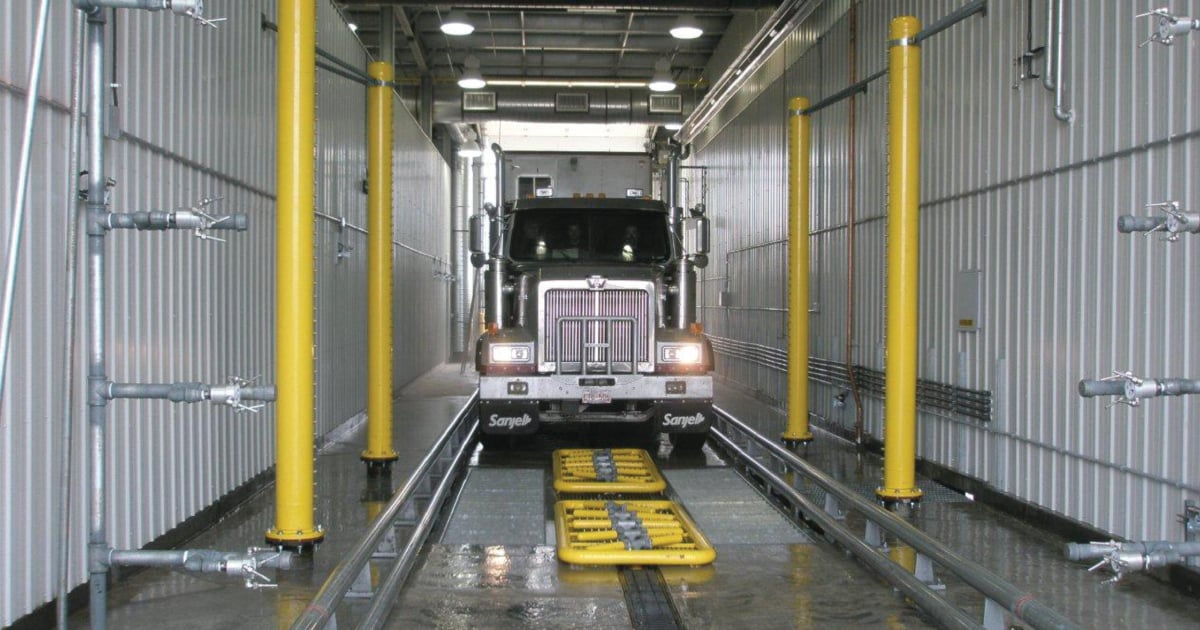
Garbage Trucks
Does anything get dirtier than a garbage truck? Probably not, making regular cleanings a must – and also making them a challenge. Doubling down on the difficulty, the exteriors of garbage trucks are covered with equipment and odd angles that can make for an awkward cleaning shape.
In a blog post on the topic, ISTOBAL points to a variety of approaches to washing garbage trucks. In general, the company says garbage truck washes involve high pressure and no brushes, since the brushes would struggle to reach all the gaps, grooves and recesses of the complex bodywork. Garbage trucks typically are washed approximately every three days after a night shift.
According to ISTOBAL, a touchless rollover can be used for small fleets, including the use of chemical spraying and high pressure on the sides, roof and rocker panel. “The rollover moves along the vehicle in several passes lasting about 12 minutes altogether,” the blog post said.
For the routine washing of a larger fleet of more than 15 trucks, however, ISTOBAL said drive-through systems typically are the choice. Trucks slowly move through a washing lane fitted with different wash systems.
“The rocker panel area is washed, a foamy chemical is sprayed completely covering the vehicle, high pressure water is applied by a wash arch consisting of rotator nozzles, and then a final rinse is performed. All this is done in just one and a half minutes,” according to ISTOBAL.
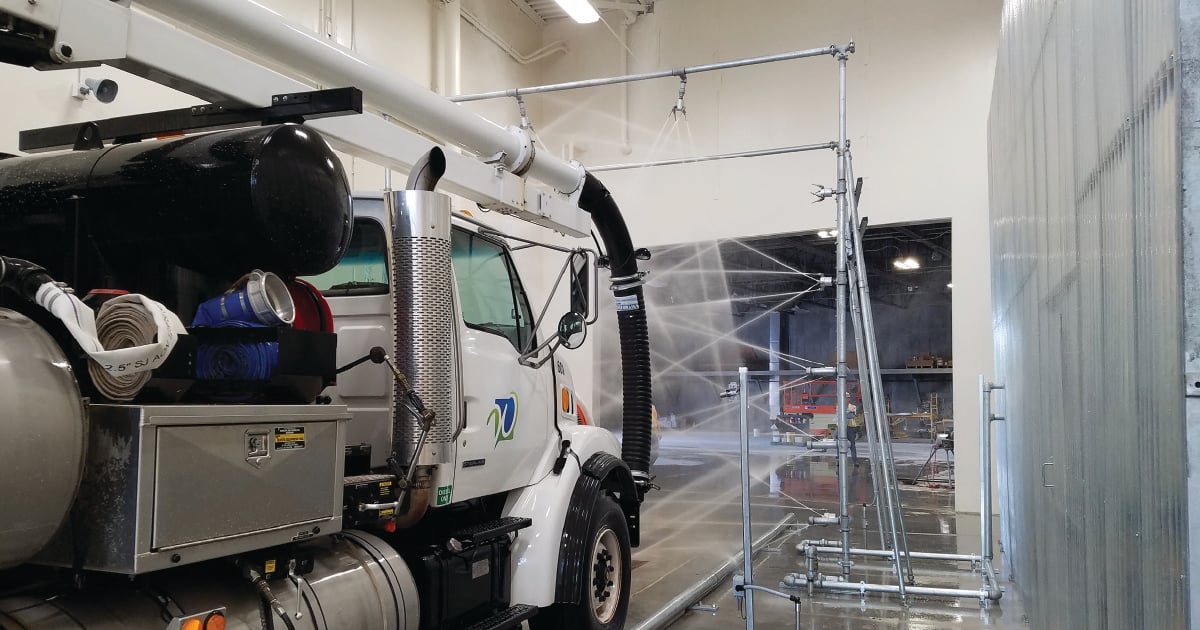
Passenger trains
According to N/S Wash, a vehicle wash manufacturer, passenger trains are cleaned nightly. After each coach receives an interior cleaning, it is driven through a railroad car wash. Train cleaning systems from providers such as InterClean, N/S Wash and Aquafrisch involve a combination of high-powered nozzles and brushes.
N/S Wash said its railroad car wash system follows a standard cycle similar to a car wash: a rinse cycle to remove dirt and other particles, a detergent cycle with brushes to cut through grime, a rinse cycle to remove the detergent and a drying cycle in cold climates to keep the water from freezing on the train.
A railroad car, of course, needs a railway track running through the bay to allow it to move. For the initial rinse cycle and the detergent cycle of the N/S Wash process, the train moves forward, but it comes to a halt after the detergent is applied to allow the product to work on the body, according to N/S Wash’s system. The train moves very slowly – below 3 miles per hour – during the final rinse cycle.
Aquafrisch offers both mobile train wash plants and fixed train wash plants. In contrast to the fixed plants, train cars remain stationary when washed in Aquafrisch’s mobile plants.
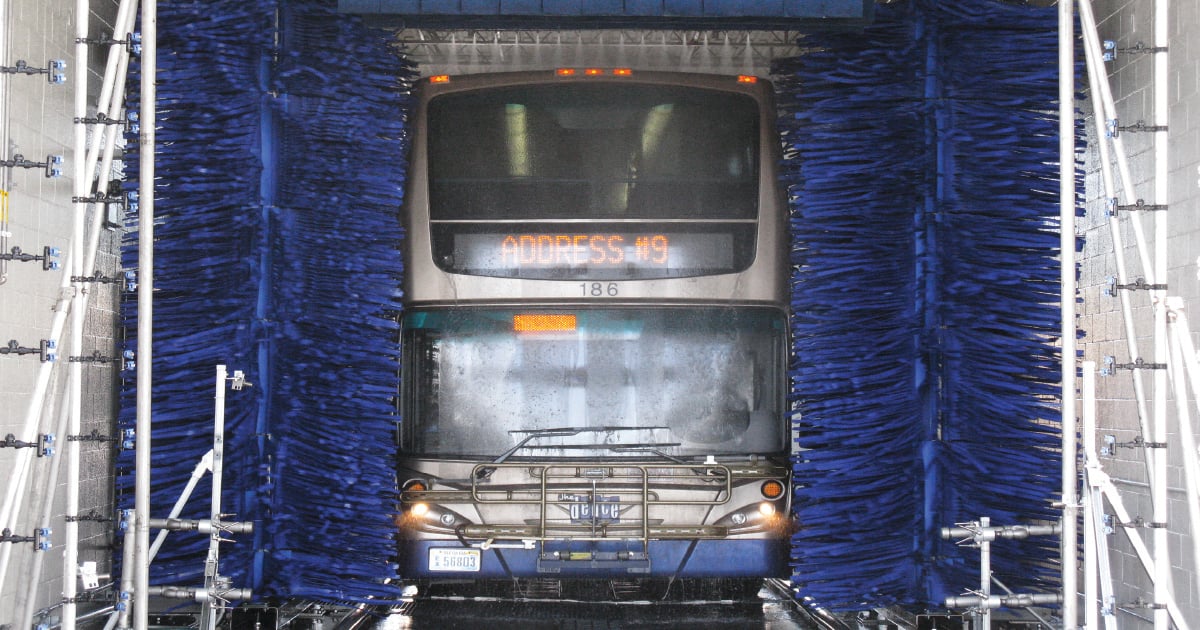
Airline fleets
The exteriors of airplanes face a host of cleanliness challenges both in the air and on the ground, and the appearance of an airline’s fleet is crucial to the way its customers view them.
There are no washes to run airplanes through, of course, but regular cleaning is an important part of their routine maintenance. TravelSkills talked to officials from three major airlines to find out how they approached cleaning the exterior of their aircraft.
The frequency varied. Singapore Airlines washes its planes monthly while United Airlines opts for every 50 days and British Airways aims for every six to eight weeks, according to TravelSkills. British Airways noted that the frequency its planes are washed can depend on the aircraft type. British Airways’ short-haul planes experience more take-offs and landings each day than long-haul jets, so they are washed more frequently, while United Airlines maintains the same schedule for its aircraft no matter the fleet type.
The location for washings for United Airlines’ aircraft is determined by where they experience long layovers. United has wash locations at airports around the world at airports, according to TravelSkills, while British Airways uses designated spots at its hubs at the London Heathrow and London Gatwick airports and Singapore Airlines has designated bays at Changi Airport in Singapore.
The process for washing the exterior of a widebody United Airlines aircraft takes approximately five hours with a crew of three to five using extension poles. British Airways’ planes take eight hours to wash, using specialist cleaning detergent, high lifts and aircraft brushes. Singapore Airlines, meanwhile, takes two to five hours to wash a plane using an aircraft cleaning robotic system, scissor lifts, aerial lifts and water tankers, according to TravelSkills.
… and pets
Vehicles are not the only things that often need to be taken out for a wash. An increasingly common add-on service at car washes is the self-serve pet wash station. The stations give customers all the tools they need to clean their pets. Levi Gilman, manager of Magic Car and Pet Wash, which has two Missouri locations, said the pet wash can be a natural part of a car wash.
Gilman said Magic Car and Pet Wash added its pet washing services because it represented something different that wasn’t already represented in the area.
“Both of our locations have rural communities that do not take their dog to the groomer but still have the need of getting their pet clean,” Gilman said.
Gilman said the response from customers has been enthusiastic.
“It is right at waist level, so they are not having to bend over to wash the dog,” Gilman said. “All the chemical is also dispensed through the spray (like a self-serve car wash), so they don’t have to try and fight bottles of shampoo while trying to keep the dog in the tub. There are many people who use the pet wash now instead of the groomer. They also like how the mess of hair and dirt is contained and not all over their house.
They also like the dryer, so they don’t have to put their soaking wet dog in their car.”
Gilman said the pet washes are virtually maintenance-free with few breakdowns.
“One of the biggest challenges is keeping them clean,” Gilman said. “On a busy day, they could use cleaning multiple times a day, more so than a self-serve bay. At one location, we have trouble with homeless people trying to sleep in the pet wash room since it is climate-controlled. However, at the other location we do not have a problem with that at all, so it really depends on location with that.”
In addition to the pet wash machine itself, Gilman said the pet wash operation requires water, electricity, sewer connection and the chemical component (shampoo, conditioner, flea & tick shampoo, tub disinfectant). Because of Magic’s location in the Midwest, “we require a climate-controlled building to ensure year-round usage of the pet wash.”
Gilman said Magic’s customers do not tend to wash their car and their dog on the same trip. However, he said, “we do see those customers who come to just wash their dog on different days washing their car.”
Gilman said the car wash and pet wash seem to be a combination that works.
“I think it does seem to fit well,” Gilman said. “For our area, it was something new that no one else had, and it was something that no one really talked about much. However, it seems that more and more car washes are adding them to their new builds or their remodels now. It is also something different to get people on the site and see how great the car wash is. We have many customers that drive over an hour one way to use our pet washes – which is many customers that we would not obtain if we didn’t have a pet wash.”



